Molecular & Cell Bio. - Exam 2 - Apoptosis
1/20
There's no tags or description
Looks like no tags are added yet.
Name | Mastery | Learn | Test | Matching | Spaced |
|---|
No study sessions yet.
21 Terms
what is apoptosis?
programmed cell death
- a physiological process by which unwanted or useless cells are eliminated during development and other normal processes
- often found during tissue homeostasis, embryogenesis, immunological reactions, and nervous system development

what are the characteristic events that occur during apoptosis, in the order they occur?
① cell shrinkage
② organelle reduction
③ mitochondrial leakage
④ chromatin condensation
⑤ nuclear fragmentation and cytoplasmic aggregation
⑥ membrane blebbing/changes
⑦ partition of the nucleus and cytoplasm into membrane-bound vesicles called apoptotic bodies containing ribosomes and mitochondria → apoptotic bodies are recognized and phagocytized by macrophages or adjacent cells (no inflammatory response)
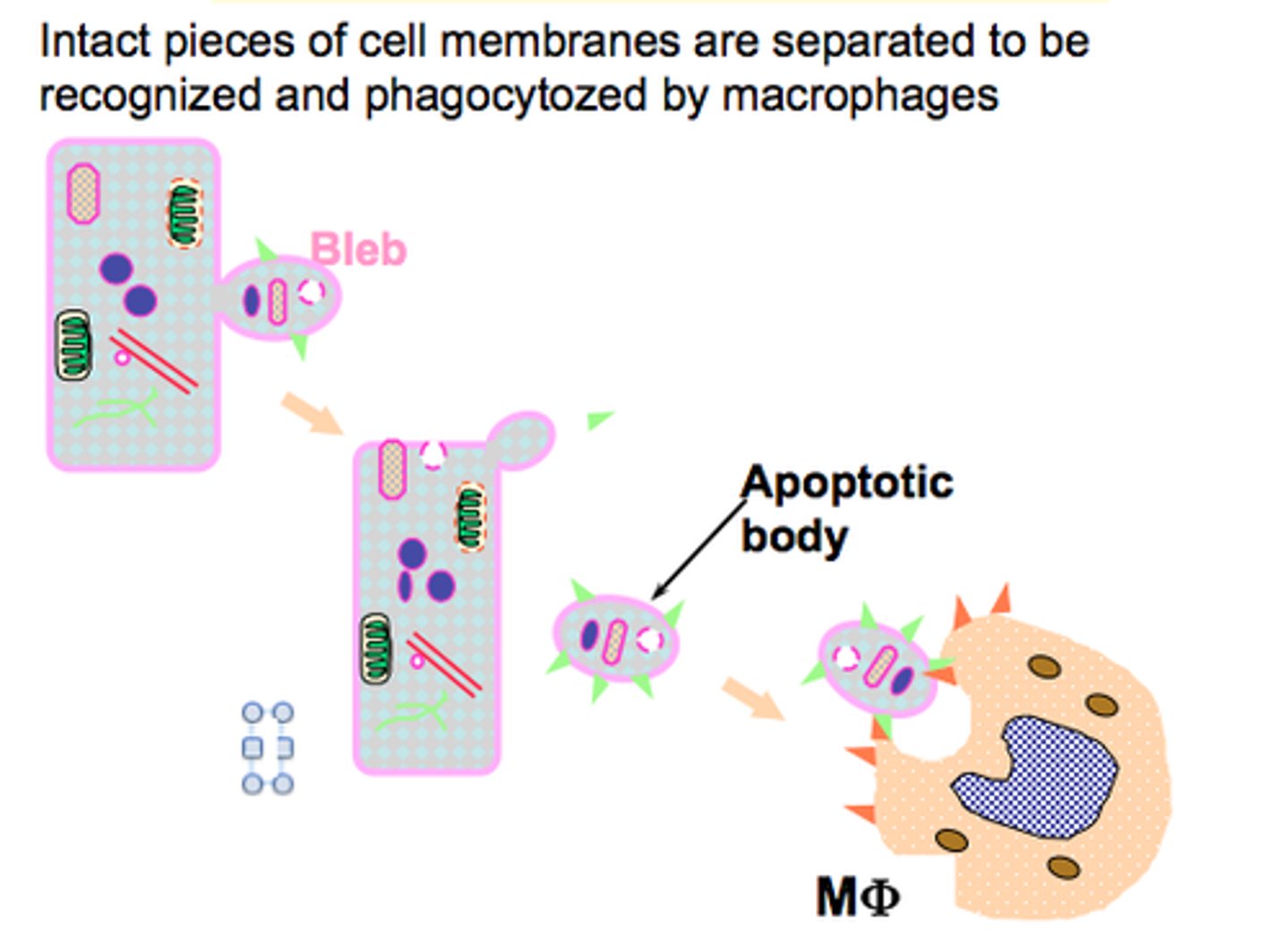
what is necrosis?
accidental cell death
- a pathological process that occurs when the cells are exposed to serious physical or chemical insults
- occurs during bacterial or fungal infections, hypothermia, and hypoxia
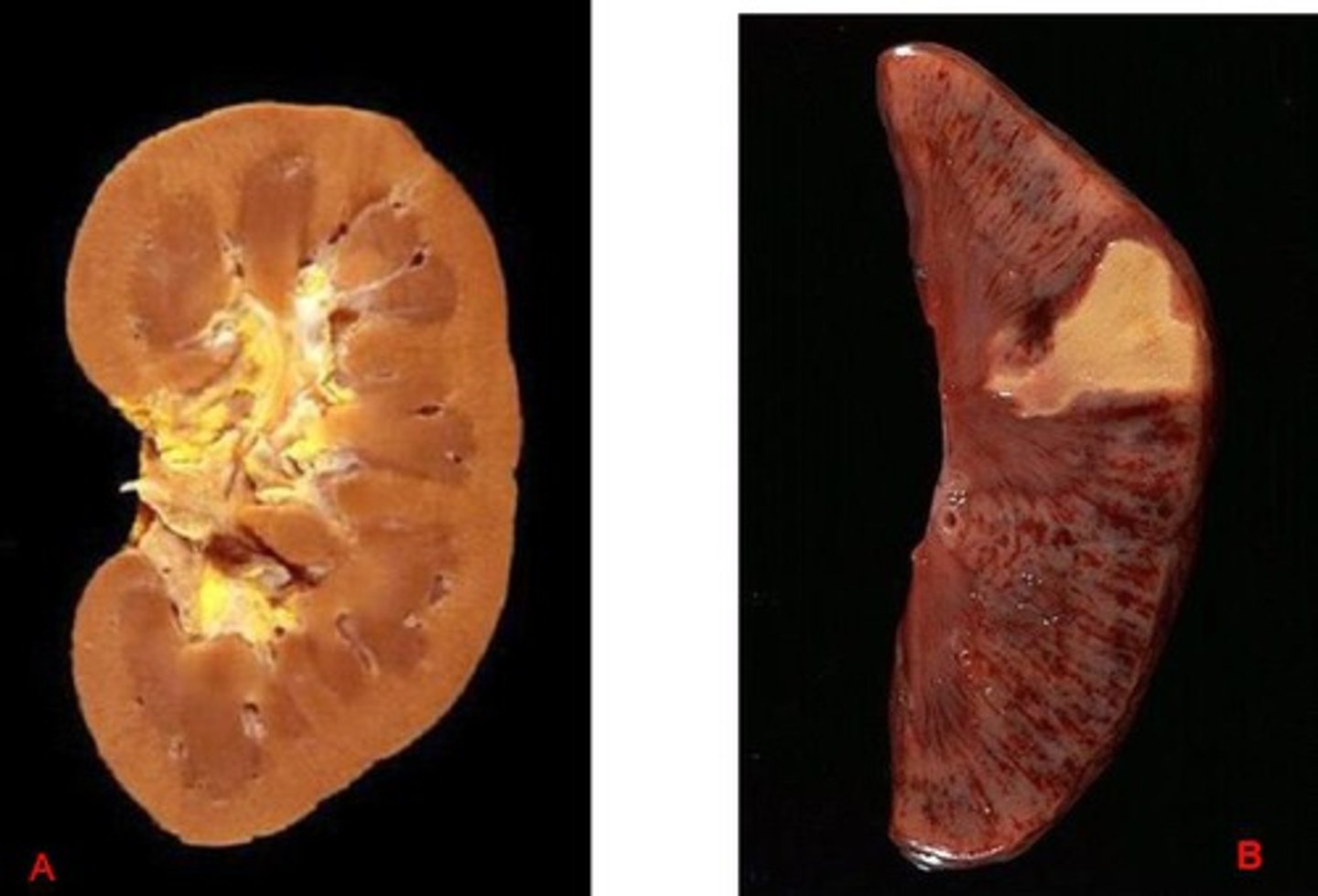
what happens to a cell undergoing necrosis?
the cell and organelles swell and rupture to release the entire cell content into the EC fluid
- this includes lysosomal enzymes, leading to severe inflammation in the surrounding tissues
what are the major similarities between apoptosis and necrosis?
- both are cell death pathways in plants and animals
- both are characterized by profound membrane and mitochondrial dysfunctions
- remnants of both pathways are phagocytized
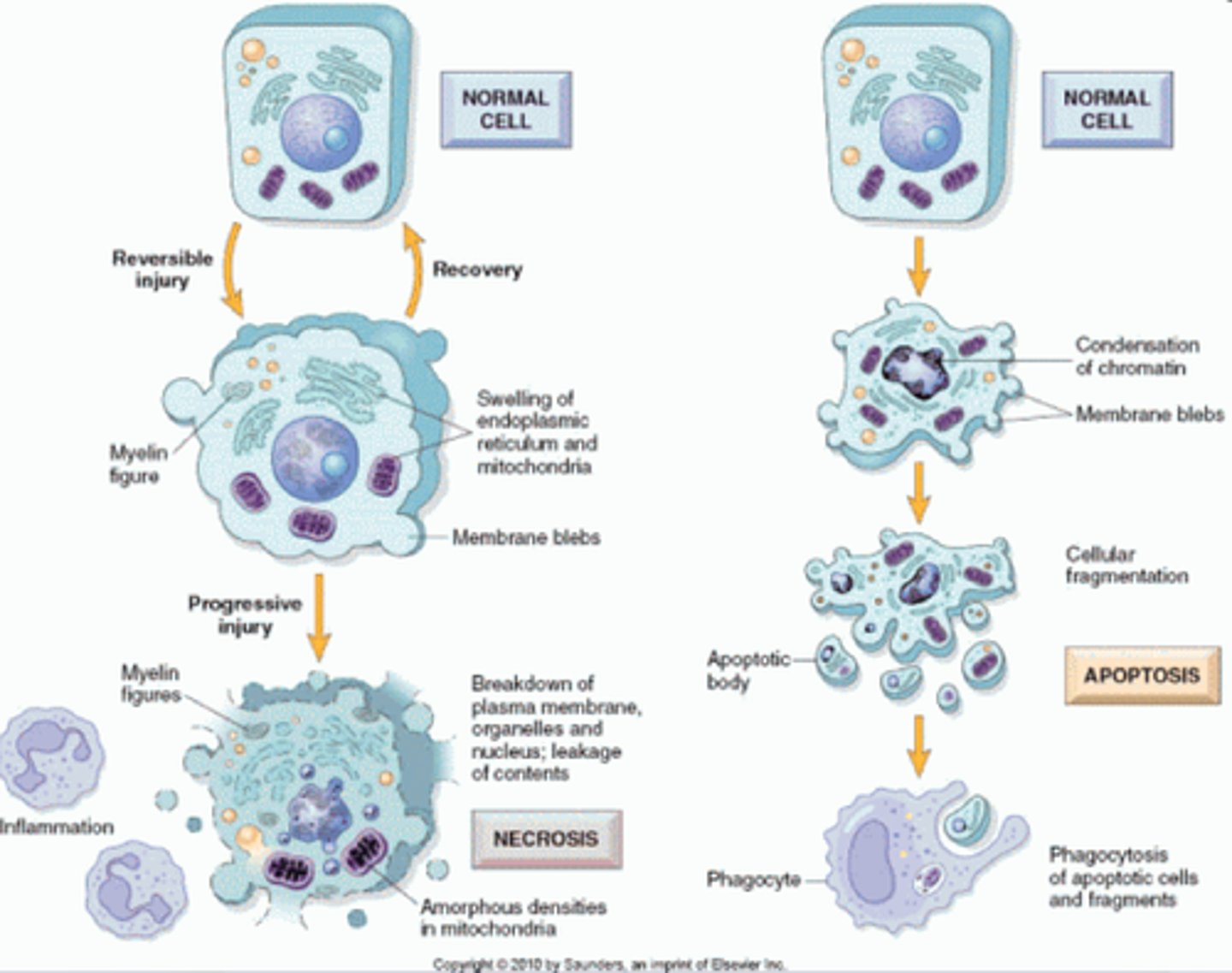
list the stimuli, histological appearance, DNA breakdown activity, mechanism, and tissue reaction of necrosis
- stimuli: hypoxia, toxins
- histological appearance: cell swells, coagulation disruption of organelles
- DNA breakdown: random and diffuse; no DNA laddering
- mechanism: ATP depletion causes membrane injury (membranes are broken)
- tissue reaction: inflammation
list the stimuli, histological appearance, DNA breakdown activity, mechanism, and tissue reaction of apoptosis
- stimuli: physiologic and pathologic conditions
- histological appearance: single cell, chromatin condensation, apoptotic bodies
- DNA breakdown: internucleosomal; can view DNA laddering
- mechanism: gene activation, endonucleases, proteases; membranes remain intact
- tissue reaction: no inflammation; phagocytosis of apoptotic bodies
T/F: apoptosis requires energy
TRUE
- apoptosis is an essential part of life for every multicellular organism!
what type of cell death is needed for the formation of the fingers and toes of the fetus and for the sloughing of the uterine lining?
apoptosis
what type of cell death is needed for cells infected with viruses, immune cells, cells with DNA damage, and cancer cells?
apoptosis
what is DNA laddering?
a sensitive indicator of apoptosis
- during karyorrhexis (nuclear fragmentation), endonucleases cleave at internucleosomal regions, yielding fragments that can be read using gel electrophoresis
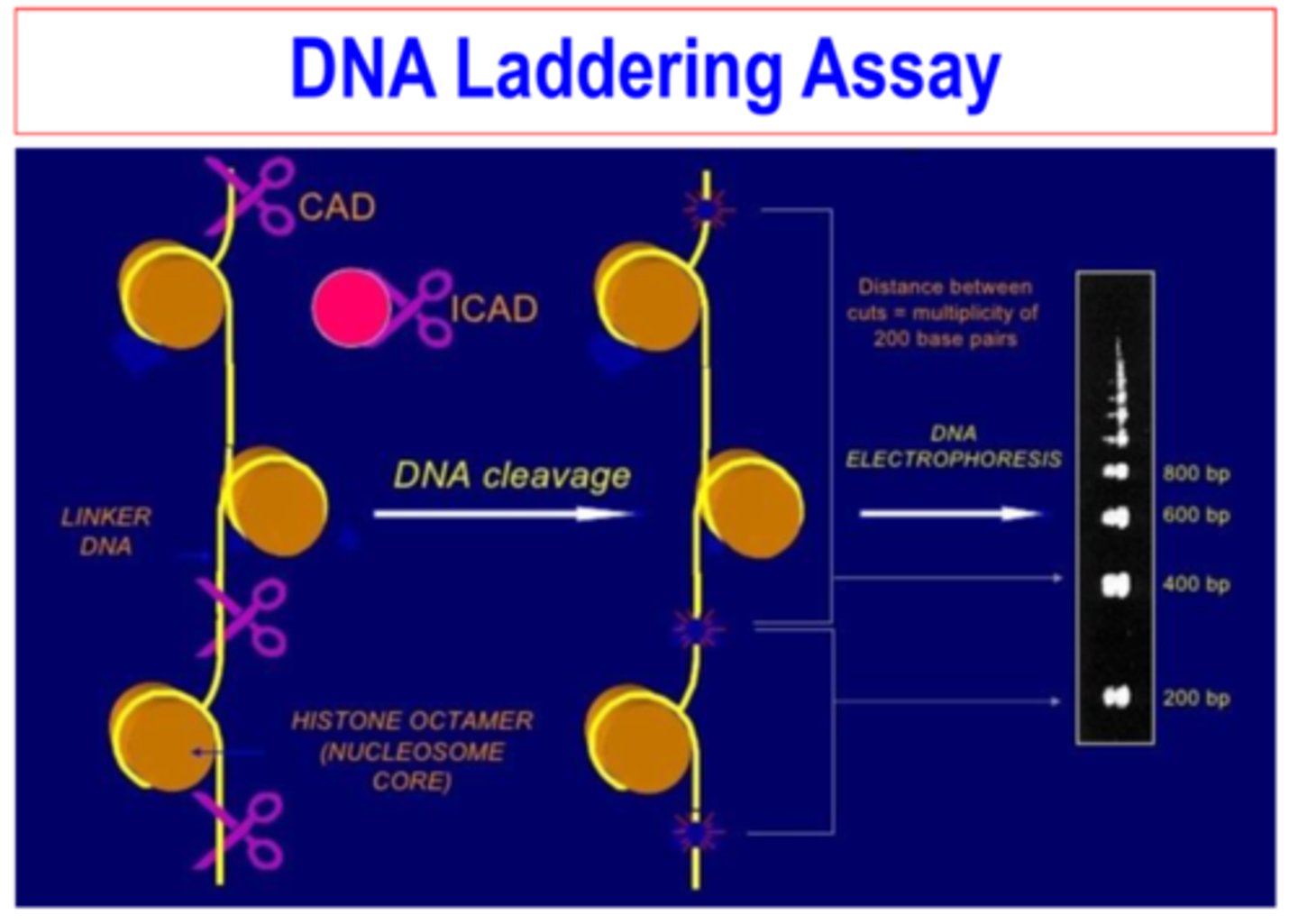
the bcl-2 family of proteins is involved in the regulation of apoptosis; which genes are anti-apoptotic? which are pro-apoptotic?
anti-apoptotic (death antagonists)
- bcl-2
- bcl-xL
pro-apoptotic (death agonists)
- bax (upregulated by p53)
- bcl-xS
- bad
- bid
compare and contrast the activities of oncogene bcl-2 and tumor suppressor gene p53
bcl-2
- over-expression PREVENTS apoptosis
- antagonized by cell death (ced) genes and other (bax, bad, etc.)
- localized to the mitochondria, nuclear envelope, and ER
p53
- causes cells with DNA damage to undergo apoptosis
- induces bax expression
- reversed by over-expression of bcl-2
what are caspases?
site-specific cysteine proteases responsible for most of the changes seen during apoptosis
- found in many organisms
- function as initiators or effectors of the cell death cascade
- dysregulation results in many human diseases (cancer, autoimmunity, neurodegenerative disorders, etc.)
describe the precursor of caspases
procaspases
- inactive precursors
- contain an N-terminal pro-domain + a large subunit (p20) and small subunit (p10)
- the mature caspase is a heterotetramer of 2 p20/p10 heterodimers and 2 active sites
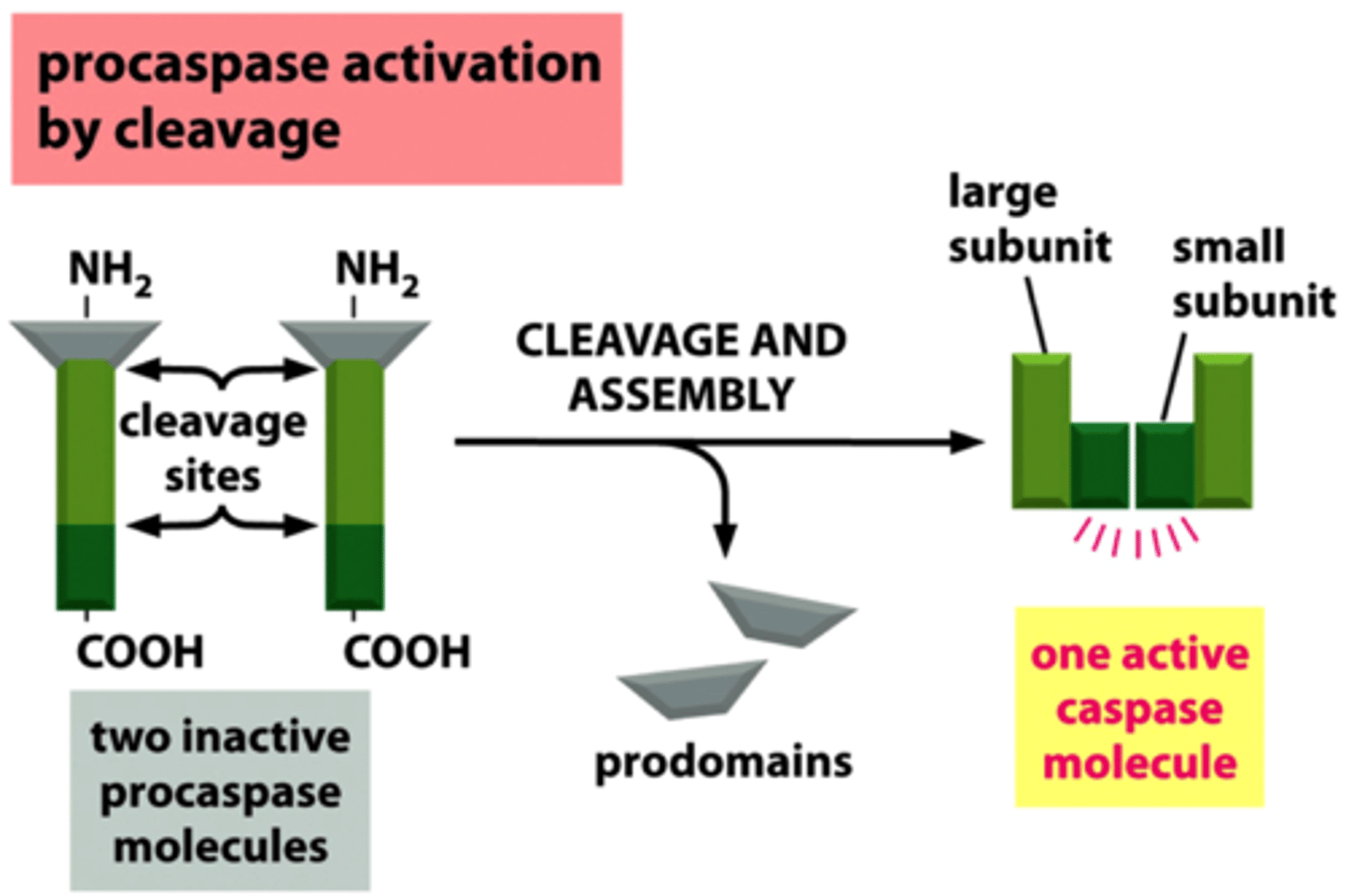
T/F: caspases require only dimerization of procaspases to be activated
FALSE
- require both the cleavage of the single-chain procaspases AND dimerization
what are the 3 functional groups of caspases found in mammals?
- initiator → caspases 2, 8, 9, 10
- executioner → caspases 3, 6, 7
- inflammatory → caspases 1, 4, 5, 11, 12
describe the extrinsic cell death pathway
initiated when apoptotic signals come from OUTSIDE the cell
- a death ligand (like a Fas ligand on killer lymphocytes) binds to a cell surface R
- adapter proteins bind to the IC portion of Fas R's, causing aggregation of procaspase-8 molecules
- activated initiator caspase 8 then activates effector caspase 3
- activated caspase 3 then initiates a signaling cascade to induce apoptosis
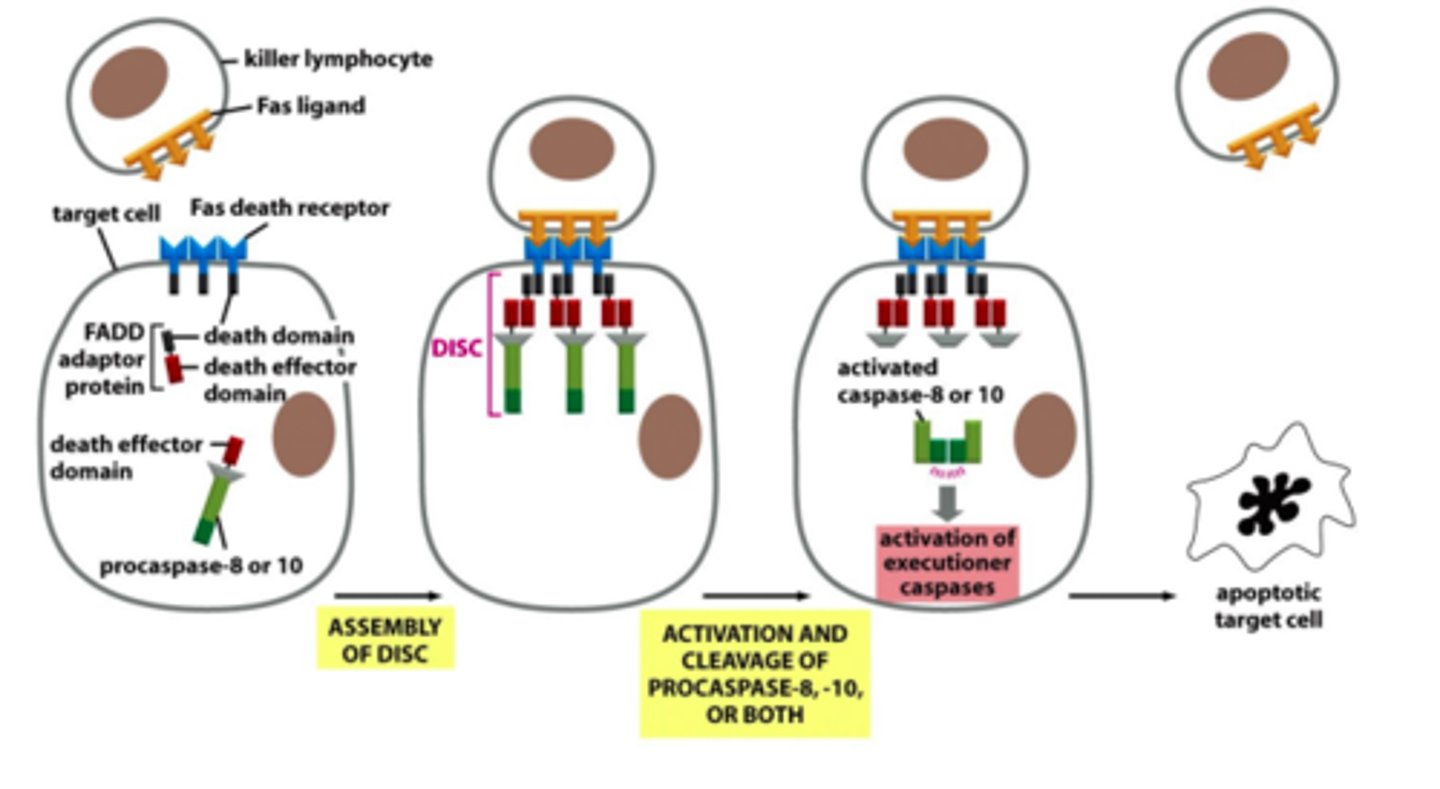
describe the intrinsic cell death pathway
initiated when apoptotic signals come from INSIDE the cell
- signals such as DNA damage, p53, etc. stimulate the mitochondria to release cytochrome c
- cytochrome C binds to adapter protein Apaf-1 to form an apoptosome
- the complex then binds to inactive procaspase 9 and activates it
- activated procaspase 9 then activates effector caspase 3
- caspase 3 then initiates a caspase cascade that ultimately results in apoptosis

why is apoptosis important to development and normal adult physiology?
- development: immune system maturation, morphogenesis, neural development
- adults: immune privilege, DNA damage repair, wound healing
what happens if there is excessive apoptosis in the body? what if there's deficient apoptosis?
- excess: neurodegenerative diseases
- deficient: cancer, autoimmunity